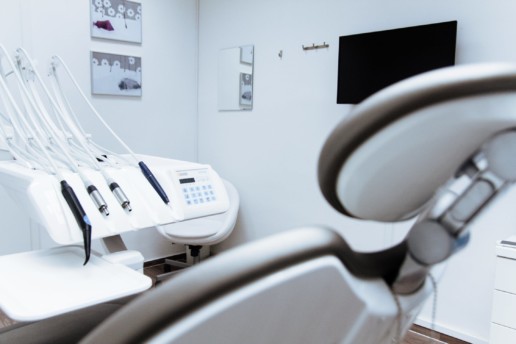Finding the Hidden Benefits within your Offered Health Insurance Plan
Benefits packages offered by employers are just one of the many elements an employee considers when joining, remaining at or leaving a company. Striking the right balance of what employees want and what your business has to offer will allow for a return on investment. In this installment of CenterStage, Kelley Bell, a Group Health Benefits Consultant at Saxon Financial, explains how to unlock and bring forth benefits often overlooked by employers and employees.

The Reason for Employee Benefits
Employers of all sizes within the United States aim to offer attractive health insurance benefits that will both attract prospective employees and retain those talented individuals who are currently employed. Aside from looking to earn money to put food on the table, pay bills and set aside for later, people seek employment for assistance in alleviating the burden of having to pay for insurance plans singlehandedly. Thus, they plan where they will work and for how long they will work based on what your company has to offer.
When looking at benefits plans, most people assume the usual: a comprehensive health plan that assists in providing medical insurance and reduces pharmacy costs. However, a benefits package you receive from an employer today is no longer your parents’ benefits package. Just as trends in fashion and pop culture come and go, so should the benefits within an employer’s plan.
It is unique offerings that attract potential employees and retain current ones. Additionally, it is in the hands of employers to offer methods to achieve and shift culture in a positive way by offering necessary methods to do so. Employee benefits packages today are shaped to fit the needs of the employees.
As the nation’s health has declined, an uptick in the popularity in offering benefits such as discounted or free gym memberships has become a major plus. How are employees to be aware of the perks of employment with your business? They need to be properly educated about their plans. Kelley explained, “Employers must take time to educate employees as they are their most valuable asset.”
Benefits That Get Overlooked
Every employer, no matter how big or small, has something to offer. With over 25 years of experience in the financial industry, Kelley has seen and heard it all from employers with whom she partners with in selecting benefits for their employees. “I’ve heard people say they have a horrible plan but in reality, it is not a horrible plan, they don’t understand it or how to use it.” When investing in an ‘add-on’ benefit, there is typically a large sum injected into a new initiative, but the results are often short-lived, a short spark of novelty. The benefits that carry stamina are usually those that hold tremendous value in both a sense of time and money. Kelley continued, “Some of the embedded benefits in their existing plans will help save them money, become a wise consumer and ultimately choose to live a healthier lifestyle.”
What are some examples of benefits that fly under the radar of employers and their employees?
- Telemedicine medical services. Telemedicine is a fantastic way to recover and receive treatment for an illness or injury from the comfort and convenience of their car, work or home rather than in a doctor’s office.
- Wellness initiatives are another fantastic offering which is simply implementing a wellness committee dedicated to the well-being of your employees.
- Saxon offers a free portal with wellness information available to clients. Becoming a member includes receiving newsletters, email blasts, wellness information and challenges your business can utilize.
- Consumers of healthcare have historically been conscious purchasers. Within your plan, check for the ability to leverage multiple doctors and pharmacies to find the most cost-effective option for each employee. Medical offices inside pharmacy’s, or retail outlets, as well as Urgent cares, have seen increased rates of attention simply for their competitive prices as opposed to a traditional hospital.
- Employers looking for additional ways to offer savings for employees on their prescription medications can turn to mobile apps such as GoodRx which offers money-saving coupons for medications.
- Online wellness tools allow you to view claims, ID cards, locate doctors, browse medications and estimate costs. Many of the plans have teams to help people who are pregnant, want to stop smoking, lose weight or have specific health conditions such as asthma, diabetes, heart disease, etc.”
How Saxon Helps
Kelley understands every business is unique and is dedicated to proactively serving the needs of each client. At Saxon, Kelley and our team of advisors begin by engaging experts that truly listen, building successful strategies that stay focused on your vision and goals.
Saxon exists to care, cultivate and empower through relationships, expertise and exceptional standards of service. Saxon’s WIN team is always available at your convenience to unlock the benefits you did not know you had in order to excel your organizational efforts upward.
To begin the conversation about putting your overlooked benefits into action, contact Kelley Bell today at (513) 774-5493 or (937) 672-1547 or via email at kbell@gosaxon.com.
Engaging employees in healthcare — even while traveling
In 2018, Americans took 463.6 million trips for business, leaving employees unsure of what to do when they get sick or injured while away. Read this blog post for how employers can engage employees who are traveling in healthcare.
Business travel is booming. Americans took 463.6 million trips for business last year. But what happens when a business traveler gets sick or injured while away from home and how can employers help their employees in this situation?
It starts with a simple solution: Make sure you’re providing employees with a health insurance plan that includes coverage outside the state or region where the business is located. While the majority of plans provide coverage for illnesses and injuries that meet the insurer’s definition of an emergency, some plans don’t cover care for common serious, but non-emergency health problems like strep throat, migraine headaches, a sprained ankle or back pain. Employers should ensure they offer at least one plan option that includes either an extended physician and hospital network or coverage for out-of-network care.
If employees need to travel out of the country for business, employers may want to consider offering travel medical insurance, which provides coverage during the period of time while the employee is outside the U.S. and medical evacuation if needed. To ensure employees have all the immunizations they need and are aware of any health risks at their destinations, employers can offer access to or reimbursement for pre-trip visits with a travel medicine specialist.
Even when employees have health insurance that gives them access to care while they’re away from home, connecting with experienced healthcare providers can still be difficult. Some insurers offer phone support for plan members seeking care providers, although often these providers are not heavily vetted for the experience or providing the highest quality care. Health advisory services can also help employees find and connect with healthcare providers in the U.S. and overseas.
When considering health advisory firms, employers should ask how the firm vets the healthcare providers it connects employees with and whether the firm uses a set network of providers or whether it connects employees with the most appropriate providers regardless of their health system affiliation.
Make sure employees know how to find the right type of care
When an employee falls ill or gets injured while traveling for business, her or his first instinct may be to seek care at a local emergency room, but that’s not always the best option. In addition to long wait times, the cost of care delivered in the emergency room is significantly higher than other care settings.
- Employers can help employees make better choices by providing information about the options available and how to choose the right care setting:
- The emergency room for serious, life-threatening illnesses and injuries such as chest pain, symptoms of a stroke, serious burns, head injury or loss of consciousness, eye injuries, severe allergic reactions, broken bones and heavy bleeding
- An urgent care center for conditions you’d usually make a doctor’s appointment for such as vomiting or diarrhea, fever, sprains, moderate flu symptoms, small cuts, wheezing and dehydration
- A walk-in or retail clinic for minor problems such as a rash with no fever, mild flu-like symptoms, sore throat, cough and congestion, ear pain and eye itchiness or redness
- Telemedicine or virtual physician visits for minor illnesses and injuries and advice on whether additional care is needed
The key to helping employees know which care setting is the most appropriate is ongoing communication and education, which can take the form of in-person meetings with the benefits team, newsletter articles and email blasts, and video content shared through the company’s intranet channels.
Employees who are living with chronic health conditions should take special steps when traveling for business, including ensuring they have enough of any prescription medication they take and bringing an extra prescription with them for essential medications in case they’re lost in transit.
Ensure employees can quickly share their medical records with providers
Another important part of the healthcare equation for business travelers is ensuring that when they need care while they’re on the road, the healthcare providers who treat them can get quick, secure access to their medical records. Access to these records is important for several reasons:
- It gives a provider who’s not familiar with the employee’s medical history a comprehensive look at past and current health problems and chronic conditions, medications, allergies or adverse reactions, and treatments and surgeries. Having this information can lower the risk of misdiagnosis, inappropriate care and duplicate care or testing, which not only adds unneeded costs but can also cause harm.
- This information can be especially important when employees are seriously ill or injured and can’t speak for themselves to share medical history and their wishes about issues like the use of a ventilator or feeding tube.
There are several online services and apps that allow users to upload medical records so they can share them with healthcare providers. Another option is to work with a health adviser who can make sure employees’ records are carefully reviewed to ensure accuracy and stored in a secure universal medical record that can be accessed in minutes by treating physicians anywhere in the world.
Giving employees who travel for business the right resources and guidance can not only increase their peace of mind, it can help make sure they have access to the care they need wherever work takes them.
SOURCE: Varn, M. (18 June 2019) "Engaging employees in healthcare — even while traveling" (Web Blog Post). Retrieved from https://www.benefitnews.com/opinion/engage-employees-in-healthcare-when-traveling
One overlooked way to promote well-being: Target oral health
Are you promoting oral health when promoting employee wellness? Research shows an association between gum disease and conditions like diabetes and coronary artery disease. Continue reading to learn more.
With the cost of employer-sponsored healthcare benefits approaching $15,000 a year per employee, according to the National Business Group on Health, innovative companies are looking for new and creative ways to get maximum value from their benefits dollars.
By embracing benefits strategies focused on overall health, companies can help their current employees be healthier and more productive and attract and retain the workers they need to succeed in today’s competitive labor markets.
And although wellness programs or health apps might first spring to mind, there’s an overlooked way to promote employees’ health: oral care.
Guided by research that shows associations between gum disease and conditions like diabetes and coronary artery disease, forward-thinking dental insurers are developing products that emphasize the importance of regular oral care, particularly for workers with those conditions — and smart companies are jumping on board.
Products that emphasize the importance of maintaining oral health are an important step in integrating care. Over the next several years, leading-edge insurers will create new ways to engage patients in conversations about their dental and overall health, as they seek to encourage behavior changes and improve health outcomes. To help improve oral and overall well-being, insurers will need to share oral care information with their members through targeted emails, text messages and phone calls.
Additionally, because individuals dealing with a complex treatment plan may put off receiving oral care while they address their medical issues, they could benefit from plans featuring a case manager, or a “dental champion.” Working in conjunction with medical case managers, a dental champion can help employees understand how receiving regular oral care can influence their overall health. They also can ensure a company’s workforce is getting the oral care they need, helping them find providers and arrange appointments.
Savvy employers recognize that any realistic effort to limit the increase in healthcare costs begins by addressing chronic ailments. According to the Centers for Disease Control and Prevention, six in 10 Americans live with at least one chronic disease, like heart disease, cancer, stroke or diabetes.
By promoting overall health — including regular oral care — employers can encourage positive lifestyle changes that help their employees reduce the likelihood of many chronic problems. Those who brush and floss their teeth regularly, receive frequent cleanings and checkups and deal with oral issues at early stages are taking steps to improve their overall health.
Because everyone’s individual situation is different, insurers and employers will need to include a more personalized approach, engaging members in conversations about their dental health and how it contributes to attaining their overall health goals.
SOURCE: Palmer, T. (13 June 2019) "One overlooked way to promote well-being: Target oral health" (Web Blog Post). Retrieved from https://www.benefitnews.com/opinion/promoting-wellbeing-through-dental-health
Here’s how to get the best ROI on a wellness program
How many hours do your employees work per year? According to the International Labour Organization, Americans work nearly 500 more hours per year than French workers and 260 more hours per year than British workers. Continue reading to learn how employers can get the best ROI on a wellness program.
U.S. employees are working harder than ever and need more support from their employers as a result.
In fact, according to the International Labour Organization, Americans work 137 more hours per year than Japanese workers, 260 more hours per year than British workers, and nearly 500 more hours per year than French workers.
With that growing burden — along with more individuals of all ages recognizing how important their health is — comes an increased need for companies to invest in well-designed health and wellness programs. Rolling out these programs can lead to better employee morale and engagement, a healthier and more inclusive culture and fewer absences due to illness, according to research — all of which are especially important in today’s fast-paced work atmosphere.
In addition, the rise of social media means that businesses are being held accountable by their employees in a way that was not the case for previous generations. According to the British Standards Institution, employees trusting their employers’ commitments is now an increased focus. Health and well-being are becoming a significant part of that workforce trust agenda.
With these points in mind, it’s important to recognize that your organization needs to make and keep commitments to investing in and executing successful health and wellness programs for your workforce. These programs must keep trust momentum going to ensure healthier and happier workers, and it is proven that happier and healthier workers are more productive. This can lead to overall company success.

For example, a recent employee wellness study from the U.S. Chamber of Commerce showed that effective wellness programs have good return on investment of $1.50 to $3.00 per wellness dollar spent over a two to nine year timeframe. Another study from the Australian-based Black Dog Institute concluded that thriving and healthy workforces typically perform more than two times above average, compared with organizations that do not invest at all in their employees’ health and well-being.
BSI recommends a three-pronged approach for successfully investing in your employees’ health and wellness. First, it’s important to define your health and well-being initiative and what it means for your company. While there are many definitions, BSI recommends considering one that recognizes the need to manage workplace occupational health and safety, in addition to the promotion and support of managing healthy behavior, such as stress management, work-life balance and an ever-changing work environment.
Next, employers should define what their health and wellness program for workers should include. In particular, BSI suggests a good model to follow: the U.S. federal government’s recommended approach for workplace health and well-being programs. Created by the Center for Disease Control’s National Institute for Occupational Safety and Health, the program is called Total Worker Health.
TWH is a holistic approach to occupational health and safety and worker well-being. It recognizes that work has an important function in the social determinants for health and is defined as “policies, programs, and practices that integrate protection from work-related safety and health hazards with promotion of injury and illness prevention efforts to advance worker well-being.”
However, this program also goes much further than other wellness programs and reflects the nature and challenges of the changing workplace, from new forms of employment to new technologies. It also reflects that non-work-related illness and stress can be adversely impacted by work, can have health and safety implications within the workplace, and the way an organization manages absence and rehabilitation policies can have hugely positive or negative impacts on the individual and the business.
Once you know what health and well-being means to your business and what kind of program your organization wants to execute, it’s time to move forward. For step three, BSI recommends companies review and implement ISO 45001, the new global management system standard on occupational health and safety. This standard has physical, mental and cognitive well-being and health at its core, while continuing to drive high safety standards for companies.
ISO 45001 also recognizes that the most successful and productive organizations take a holistic approach and therefore, good occupational health and safety management can be integrated with employee well-being initiatives. Related to this, holistic employee wellness programs can be used as a recruitment tool. Evidence from WhenIWork.com suggests that employees want their employers to take an active role in their health, so if you can show potential employees that you are invested in their well-being, you will gain an advantage over companies offering only bare-bones benefits.
As a global standard, ISO 45001 also enables a consistent worldwide approach. With its focus on culture and employee participation, it also provides businesses a best practice model for developing an effective health and well-being program. And employee participation will happen. For example, experts from the Johns Hopkins Bloomberg School of Public Health recently analyzed surveys to determine the overall perceptions of wellness programs from employee and employer perspectives. Its data analysis revealed that nearly 60% of employees think employers should attempt to improve the health of their workers.
Overall, seeking accredited certification of the standard not only builds trust within the organization, but also provides external assurance to customers, shareholders and the wider community. Investing in employee health and wellness programs increases healthy behavior and curbs the risk of lifestyle-related disease, leading to happier workers, more productivity and overall company success.
This article originally appeared in Employee Benefit News.
SOURCE: Field, K. (4 June 2019) "Here’s how to get the best ROI on a wellness program: (Web Blog Post). Retrieved from https://www.employeebenefitadviser.com/opinion/how-to-get-the-best-roi-for-your-wellness-program
Your bad work environment may be raising your healthcare costs
A growing amount of research is documenting a relationship between stressful work environments and a range of chronic conditions. Research is also finding a link between employee health and employee job performance. Continue reading to learn how your work environment could be raising your healthcare costs.
If you want to reduce the cost of healthcare for your employees — while simultaneously improving care — you may need to take a serious look at your work environment. When reviewing areas that could help reduce costs, a much overlooked aspect is a stressful work environment.
While employers have done a lot to reduce the risk of potential injuries in the workplace, they have done far less to reduce stress, which could also be harmful.
Research finds a link between employee health and job performance. There also is a growing body of research documenting the relationship between a stressful work environment and a range of chronic conditions — including depression, hypertension and sleeping problems. But employers often struggle to connect the dots between these health concerns and supporting a healthy environment for employees.
It’s difficult, if not impossible, to manage something that remains unmeasured. That’s why measuring outcomes beyond healthcare cost fluctuations, such as absence, periods of work disability and job performance, can help employers understand a broader range of outcomes important to the successful operation of their business.
When employers ask how they can affect the health of their employees, I ask what they know about the working conditions in their organization. Is there management trouble, high turnover, high illness-related absence or low job satisfaction? Some of this can be determined from employee satisfaction surveys, or analyses of sick leave data and work disability claims. Often, even more can be discovered by gathering employee feedback.
For example, listening to employees, equipping them with the knowledge to recognize safety issues and providing the tools or procedures to correct these issues, were key to improving workplace safety. A successful safety review can result in real change. Employees observe this change and a cycle is created where prevention becomes the focus because all are accountable and all have trust based on experience that their identification of potential or real safety issues will be dealt with effectively.
If employers are unaware of the factors in their own work environment that could be modified to lessen psychosocial stressors, a good place to start is by listening to employees. Many employers already conduct job satisfaction surveys or health risk appraisals that provide some information around work and health issues. These same tools could be used to identify and address psychosocial issues in the workplace.
Whatever the channel — a suggestion box, a designated HR representative, a focus group, a survey — it must provide employees with the opportunity to authentically and safely share their perspectives. And, finally, it must be demonstrably legitimate, resulting in employer actions that are clear and meaningful to all.
Typically employers use health and wellness programs in an attempt to remediate rather than prevent illness. Our interviews with medical directors of some of the leading U.S. corporations revealed a similar finding. Often, the medical director or chief health officer is charged with improving employee health, while the HR benefits manager is charged with reducing healthcare costs. Not surprisingly, these two goals can be at odds with each other. Imagine the company with a large percent of untreated depression.
So how can employers know what works or even what to try?
Evaluators often start their work by asking why particular activities, services or coverage types were chosen or implemented. This helps identify those areas more proximal to the employment setting (something about the job or in the work environment, for instance) and those areas more distal to the employment setting (such as medication formulary). To put a fine point on the problem, Pfeffer notes that “putting a nap pod into a workplace is not going to substitute for the fact that people aren’t getting enough sleep because they are working 24/7.”
Those looking to get started might begin by watching Working on Empty, an 11-minute documentary, which can provide solid direction for the type of information you’re seeking from your employees. Honor their voice and insight, and use it to implement real change. In doing so, you will build trust and a channel for contribution that improves outcomes for employees and employers.
SOURCE: Jinnett, K. (20 May 2019) "Your bad work environment may be raising your healthcare costs" (Web Blog Post). Retrieved from https://www.benefitnews.com/opinion/workplace-stress-increasing-healthcare-costs
Getting employees up to speed with health literacy
Do your employees know how much sugar is in a granola bar or how much radiation is in a CT scan? If not, it's most likely because no one is teaching them. Continue reading to learn more on getting your employees up to speed with health literacy.
Your employees probably don’t know how much sugar is in a granola bar or how much radiation is in a CT scan. They may not even know how to reach your employee assistance program.
That’s because no one is teaching them. Which is what happens when wellness program education ends at eat more fruits and vegetables and avoid added sugar.
Sometimes the advice is even wrong. For example, below is a clipping from a popular health risk assessment. Focus on the lower right quadrant.

It isn’t entirely true that low-fat and nonfat dairy is healthier. In fact, full fat dairy does have health benefits, for example some studies suggest it could help protect against diabetes. By comparison, low-fat or nonfat yogurt could be a significant source of sugar.
This is why employee health literacy is so important. With easy access to mis-information, employees need to learn to sift through the noise to determine what is actually good for them.
Plus, there is plenty to learn. Spanning from everyday health, employee medical education and health benefits literacy. I’ve outlined just a few of the ways to employers can better educate their population.
Everyday health education
Sugar is one place where health education could be more impactful — but it should go beyond just telling workers to avoid added sugars. Education starts at work. Chances are your break room is stocked with granola bars, maybe Clif Bars. The first ingredient in a Clif Bar is organic brown rice syrup. That may sound healthy, but it’s really just sugar. In fact, there are almost 60 different sugars disguised with fancy names like turbinado or malted barley extract.
Another example is sleep. We all want employees to get enough of it, but do they know how? They may not know little bits of information that could help them get more shuteye, like there is a night shift setting on their iPhone or that energy-efficient light bulbs contribute to insomnia.
But teaching everyday health is just the beginning of health literacy. The real impact comes with employee medical education.
Employee medical education
U.S. consumers are voracious purchasers of healthcare services and yet our outcomes remain poor. Americans have about 240 CT scans per 1,000 people. To put that in perspective, only about 1 in 1,000 covered people in your employee population was hospitalized for diabetes last year. So 240 times more employees are getting scans than uncontrolled diabetes.
CT scans have risks. They have about 500 times the radiation of an x-ray and are especially concerning for children because their cells are dividing more rapidly than adults and are more sensitive to radiation exposure. The dye used intravenously also carries a risk.
But many employees don’t know about these risks. So it may be important to educate your workforce about these common medical procedures and how to decide whether or not it is right for them.
Health benefit education
Here’s a wild guess: your employees don’t appreciate the health benefits you provide for them. If so, you’ve got company. Most large organizations face the same issue.
Consider the employee assistance program. Do workers know you offer one? Do they know it’s confidential? They know their emails aren’t confidential, so don’t assume they know this. Do they know the URL, username and password? How many free sessions do they get?
Repeat a similar set of questions for all your benefits. You can’t expect that some memos and a website will implant your benefits firmly in their mind.
SOURCE: Lewis, A. (25 April 2019) "Getting employees up to speed with health literacy" (Web Blog Post). Retrieved from https://www.benefitnews.com/opinion/educating-employees-through-health-literacy
Workplace Wellness Programs Barely Move The Needle, Study Finds
A recent study from JAMA found that workplace wellness programs do not cut costs for employers, reduce absenteeism or improve workers' health. Read this blog post to learn more about this recent study.
Workplace wellness programs have become an $8 billion industry in the U.S. But a study published Tuesday in JAMA found they don’t cut costs for employers, reduce absenteeism or improve workers’ health.
Most large employers offer some type of wellness program — with growth fueled by incentives in the federal Affordable Care Act.
A host of studies over the years have provided conflicting results about how well they work, with some showing savings and health improvements while others say the efforts fall short.
Many studies, however, faced a number of limitations, such as failing to have a comparison group, or figuring out whether people who sign up for such wellness programs are somehow healthier or more motivated than those who do not.
Now researchers from the University of Chicago and Harvard may have overcome these obstacles with one of the first large-scale studies that is peer-reviewed and employs a more sophisticated trial design.
They randomly assigned 20 BJ’s Wholesale Club outlets to offer a wellness program to all employees, then compared results with 140 stores that did not.
The big-box retailer employed nearly 33,000 workers across all 160 clubs during the test.
After 18 months, it turned out that yes, workers participating in the wellness programs self-reported healthier behavior, such as exercising more or managing their weight better than those not enrolled.
But the efforts did not result in differences in health measures, such as improved blood sugar or glucose levels; how much employers spent on health care; or how often employees missed work, their job performance or how long they stuck around in their jobs.
“The optimistic interpretation is there is no way we can get improvements in health or more efficient spending if we don’t’ first have changes in health behavior,” said one study author, Katherine Baicker, dean of the Harris School of Public Policy at the University of Chicago. (Dr. Zirui Song, an assistant professor of health policy and medicine at Harvard Medical School, was its co-author.)
“But if employers are offering these programs in hopes that health spending and absenteeism will go down, this study should give them pause,” Baicker said.
The study comes amid widespread interest in wellness programs.
The Kaiser Family Foundation’s annual survey of employers found that 53% of small firms and 82% of large firms offer a program in at least one of these areas: smoking cessation, weight management and behavioral or lifestyle change. (Kaiser Health News is an editorially independent program of the foundation.)
Some programs are simple, offering gift cards or other small incentives to fill out a health risk assessment, take a lunch-and-learn class or join a gym or walking group. Others are far more invasive, asking employees to report on a variety of health-related questions and roll up their sleeves for blood tests.
A few employers tie financial incentives to workers actually lowering risk factors, such as high blood pressure or cholesterol — or making concerted efforts to participate in programs that might help them do so over time.
The Affordable Care Act allowed employers to offer financial incentives worth up to 30% of the cost of health insurance, leading some employers to offer what could be hundreds or even thousands of dollars off workers’ deductibles or premiums to get them to participate. That led to court challenges about whether those programs are truly voluntary.
In the study reported in JAMA, the incentives were modest. Participants got small-dollar gift cards for taking wellness courses on topics such as nutrition, exercise, disease management and stress control. Total potential incentives averaged $250. About 35% of eligible employees at the 20 participating sites completed at least one module.
Results from those workers — including attendance and tenure data, their self-reported health assessment and results from lab blood tests — were specifically compared with similar reports from 20 primary comparison sites where workers were not offered the wellness gift cards and classes. Overall employment and health spending data from all worksites were included in the study.
Wellness program vendors said details matter when considering whether efforts will be successful.
Jim Pshock, founder and CEO of Bravo Wellness, said the incentives offered to BJ’s workers might not have been large enough to spur the kinds of big changes needed to affect health outcomes.
Amounts of “of less than $400 generally incentivize things people were going to do anyway. It’s simply too small to get them to do things they weren’t already excited about,” he said.
An accompanying editorial in JAMA noted that “traditional, broad-based programs like the one analyzed by Song and Baicker may lack the necessary intensity, duration, and focus on particular employee segments to generate significant effects over a short time horizon.”
In other words, don’t give up entirely on wellness efforts, but consider “more targeted approaches” that focus on specific workers with higher risks or on “health behaviors [that] may yield larger health and economic benefits,” the editorial suggested.
It could be, the study acknowledges, that 18 months isn’t enough time to track such savings. So, Baicker and Song also plan to publish three-year results once they are finalized.
Still, similar findings were recently reported in another randomized control trial conducted at the University of Illinois, where individuals were randomly selected to be offered wellness programs.
In one interesting point, that study found that wellness-program participants were likely already healthier and more motivated, “thus a primary benefit of these programs to employers may be their potential to attract and retain healthy workers with low medical spending.”
Everyone involved in studying or conducting wellness agrees on one thing: Changing behavior — and getting people motivated to participate at all — can be difficult.
Steven Aldana, CEO of WellSteps, a wellness program vendor, said that for the efforts to be successful they must cut across many areas, from the food served in company cafeterias to including spouses or significant others to help people quit smoking, eat better or exercise more.
“Behavior is more complicated than simply taking a few wellness modules,” said Aldana. “It’s a lifestyle matrix or pattern you have to adopt.”
SOURCE: Appleby, J. (16 April 2019) "Workplace Wellness Programs Barely Move The Needle, Study Finds" (Web Blog Post). Retrieved from https://khn.org/news/workplace-wellness-programs-barely-move-the-needle-study-finds/
Understanding Group Health Insurance
Health insurance can easily be defined as bookended in volumes of mystery. You know you need the coverage, you want to have the coverage for your employees, but chances are you simply do not know enough about it to make the first two points happen. For an employer thinking about introducing group health insurance to your employees, it can be unclear why you should provide something that is surrounded with much confusion. In this installment of CenterStage, Kelley Bell, a Group Health Benefits Consultant at SAXON, sheds some light onto the darkness that group health insurance so often casts.

What is Group Health Insurance?
In its most basic definition, group health insurance is a plan that covers all the employees who work for a given company or organization, and it potentially covers their spouses and other dependents. As the individual marketplace continues to change, Kelley noted the “increasingly difficult task of finding desirable plan designs, lower deductibles and doctors and hospitals that are in the network”. “Individuals with marketplace plans have even been told by many doctors and hospitals,” Kelley added, “that they will not accept the ACA plans from the individual marketplace. Here are reasons that considering a group plan makes more sense than leaving your employees at the mercy of the exchange:”
- Group Health Insurance has larger networks of doctors and hospitals.
- Employee premiums can be deducted pre-tax. The premium can be divided among pay periods, allowing them the convenience of paying less in from a total income perspective and allowing the premium to be broken in pieces versus a monthly sum income.
- The employer still selects the health insurance plan(s) to offer, thus choosing an appropriate plan for the staff versus allowing them to choose the “cheapest” that will hurt them financially if they need to pay for the large deductible.
- Employer contributions are tax deductible, allowing the company to save versus paying payroll tax on any compensation provided to the employee in lieu of offering health insurance.
Do I Need Group Health Insurance?
Why should you consider a group health insurance plan? Outfitting your team with health benefits simplifies the process for employees to include regular and urgent doctor visits, hospital stays and medical treatments such as physical therapy.
Health plans are the primary benefit (aside from compensation) individuals seek out when applying for employment. Your overall benefits offerings are crucial to your company or organization’s ability to attract and retain employees. Therefore, why would you not want to offer health coverage as a part of your overall compensation package?
Group health insurance involves assuming the shared risk and shared costs. Kelley defines shared risk as covering a multitude of individuals who are fairly, healthy people. “This can help keep your premium rates lower than individual plans whose rates are based solely on a person’s age and assumed risk versus the sharing of risk over a pooled premium. This relationship creates savings that reward good behavior,” Kelley said. Shared costs mean the premium can be shared between you the employer and employees. Employers have the flexibility of paying varying percentages of the premium, which could reduce the amount the employee pays versus the individual market premiums.
Working alongside a broker such as SAXON is highly recommended for smaller businesses. SAXON specializes in assisting employers with 1 to 50 employees on how to discover and purchase the benefits they need within their budget. SAXON begins each engagement process by listening to you – the employer – to develop and discover the best course of action for your business or organization. We have a proven history of discovering healthcare plans that are vital to the recruitment and retainment of talented employees.
Saxon’s Role When Considering Group Health Insurance
It is important to understand the needs of every client and educate their employees on how to use their healthcare. SAXON values client education and service above all else. We make educating employees a priority and ensure their benefits are understood and easy to use, making them value the relationship they have with you that much more. SAXON represents you, allowing us to secure the best plans and rates for you and your staff, which we review annually.
If you are considering offering group health insurance to your employees, contact Kelley Bell today at (513) 774-5493 or (937) 672-1547 or via email at kbell@gosaxon.com to begin exploring the benefits of adding this superior level of coverage today.
Digital health revolution: What we’ve learned so far
Digital health devices provide personalized feedback to users, helping improve their health. Continue reading this blog post to learn more about the evolving digital health revolution.
The promise of the digital health revolution is tantalizing: a multitude of connected devices providing personalized feedback to help people improve their health. Yet, some recent studies have called into question the effectiveness of these resources.
While still evolving, many compelling use-cases are starting to emerge for digital health, including a set of best practices that can help guide the maturation of this emerging field. In the near future, many people may gain access to individual health records, a modern medical record that curates information from multiple sources, including electronic health records, pharmacies and medical claims, to help support physicians in care delivery through data sharing and evidence-based guidelines.

As these advances become a reality, here are several digital health strategies employers, employees and healthcare innovators should consider.
Micro-behavior change.
Part of the power of digital health is the ability to provide people with actionable information about their health status and behavior patterns. As part of that, some of the most successful digital health programs are demonstrating an ability to encourage daily “micro-behavior change” that, over time, may contribute to improved health outcomes and lower costs. For instance, wearable device walking programs can remind people to move consistently throughout the day, while offering objective metrics showcasing actual activity patterns and, ideally, reinforcing positive habits to support sustained change. Technology that encourages seemingly small healthy habits — each day — can eventually translate to meaningful improvements.
Clinical interventions.
Big data is a buzz word often associated with digital health, but the use of analytics and technology is only meaningful as part of a holistic approach to care. Through programs that incorporate clinical intervention and support by care providers, the true value of digital health can be unlocked to help make meaningful differences in people’s well-being. For instance, new programs are featuring connected asthma inhalers that use wirelessly enabled sensors to track adherence rates, including frequency and dosage, and relay that information to healthcare professionals. Armed with this tangible data, care providers can counsel patients more effectively on following recommended treatments. Rather than simply giving consumers the latest technologies and sending them along, these innovations can be most effective when integrated with a holistic care plan.
Real-time information.
One key advantage of digital resources, such as apps or websites, is the ability to provide real-time information, both to consumers and healthcare professionals. This can help improve how physicians treat people, enabling for more customized recommendations based on personal health histories and a patient’s specific health plan. For instance, new apps are enabling physicians to know which medications are covered by a person’s health plan and recommend lower-cost alternatives (if available) before the patient actually leaves the office. The ability to access real-time information — and act on it — can be crucial in the effort to use technology to empower healthcare providers and patients.
Financial incentives.
Nearly everyone wants to be healthy, but sometimes people need a nudge to take that first step toward wellness. To help drive that engagement, the use of financial incentives is becoming more widespread by employers and health plans, with targeted and structured rewards proving most effective. From using mobile apps and comparison shopping for healthcare services to encouraging expectant women to use a website to follow recommended prenatal and post-partum appointments, financial incentives can range from nominal amounts (such as gift cards) to hundreds of dollars per year. Coupling digital health resources with financial rewards can be an important step in getting — and keeping — people engaged.
The digital health market will continue to grow, with some studies estimating that the industry will exceed $379 billion by 2024. To make the most of these resources, healthcare innovators will be well served to take note of these initial concepts.
SOURCE: Madsen, R. (14 March 2019) "Digital health revolution: What we’ve learned so far" (Web Blog Post). Retrieved from https://www.benefitnews.com/opinion/digital-health-revolution-what-weve-learned-so-far?brief=00000152-14a5-d1cc-a5fa-7cff48fe0001
What HR pros should know about clinical guidelines
Sets of science-based recommendations, also known as clinical guidelines, are designed to optimize patient care in areas such as screening and testing, diagnosis and treatment. Read this blog post for what HR professionals should know about these guidelines.
Your employees and their family members frequently face tough questions about their healthcare: How do I know when it’s time to get a mammogram? When does my child need a vision screening? Should I get a thyroid screening? If I have high blood pressure or diabetes, what is the best treatment for me?
For the providers who care for them, the key question is: How do we implement appropriate, science-backed treatments for our patients, testing where needed, but avoiding potentially harmful or unnecessary (and expensive) care? The answer is to seek guidance from and use clinical guidelines —along with existing clinical skills — wisely.
Clinical guidelines are sets of science-based recommendations, designed to optimize care for patients in areas such as screening and testing, diagnosis and treatment. They are developed after a critical review by experts of current scientific data and additional evidence to help inform clinical decisions across a spectrum of specialties.
Based upon this process, guidelines are then released by a number of sources and collaborations, including academic and non-profit healthcare entities, government organizations and medical specialty organizations.
From preventive care to treatment protocols for chronic conditions, guidelines provide a framework healthcare providers use with patients to help guide care. However, it’s important to note that clinical guidelines are not rigid substitutes for professional judgment, and not all patient care can be encompassed within guidelines.
The impact on healthcare and benefits
Clinical guidelines are used in myriad ways across the healthcare spectrum, and providers are not the only ones who utilize them. Insurers also may use guidelines to develop coverage policies for specific procedures, services and treatment, which can affect the care your covered population receives.
To illustrate a key example of an intended impact of guidelines on health plan coverage, consider those issued by the U.S. Preventive Services Task Force, whose A and B level recommendations comprise the preventive services now covered at no cost under the mandate of the Affordable Care Act.
As another example, the National Committee for Quality Assurance, which accredits health plans and improves the quality of care through its evidence-based measures, uses the American Heart Association guidelines when creating its quality rules for treating high cholesterol with statin drugs.
Other examples exist among commercial coverage policies. For example, some cancer drug reimbursement policies use components from nationally recognized guidelines for cancer care.
Because science is rapidly changing, guidelines are often updated, leading insurers to revisit their policies to decide if they will change how services and medications are covered for their members. Providers and health systems may modify processes of patient care in response to major changes in guidelines and/or resultant changes in payer reimbursement.
Not all guidelines are updated on a set schedule, making it even more important for providers and organizations that rely on guidelines to stay on top of changing information, as it can have a direct impact on how they work. Attending conferences, visiting the recently established ECRI Guidelines Trust, and regularly reviewing relevant professional association websites and journals can help ensure needed guidelines are current. Lack of current information can affect care decisions and potential outcomes for patients. Those who have access to the most up-to-date, evidence-based information are able to work together to make well-informed healthcare decisions.
Why it matters for employers
As employers or benefits consultants, it’s critical to ensure that your health plan, advocacy or decision support providers, and other partners that depend on this information to guide their practices and decisions understand and follow current, relevant guidelines.
Further, by combining information from relevant guidelines and data from biometric screenings, health risk assessments, claims and other sources, it’s possible for clinical advocacy and other decision support providers to identify employees with gaps in care and generate targeted communications (through a member website and/or mobile app) to help them take action to improve their health.
Clinical guidelines are science distilled into practical recommendations meant to be applied to most patients for quality healthcare. By maintaining current, relevant guidelines, organizations and providers who work with your covered population can ensure that all parties have the key information they need to make the best decisions for their health.
SOURCE: Sivalingam, J. (18 March 2019) "What HR pros should know about clinical guidelines" (Web Blog Post). Retrieved from https://www.benefitnews.com/opinion/what-hr-managers-should-know-about-clinical-guidelines?feed=00000152-a2fb-d118-ab57-b3ff6e310000










